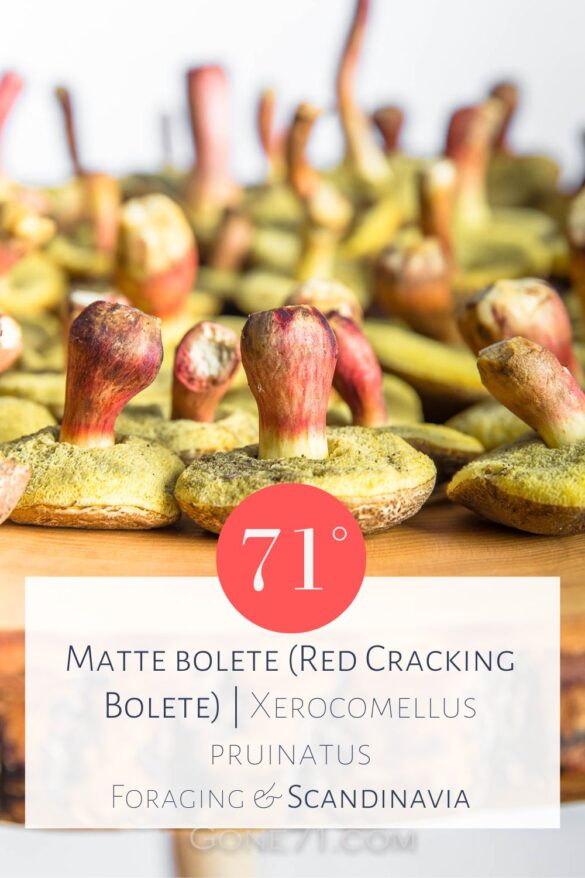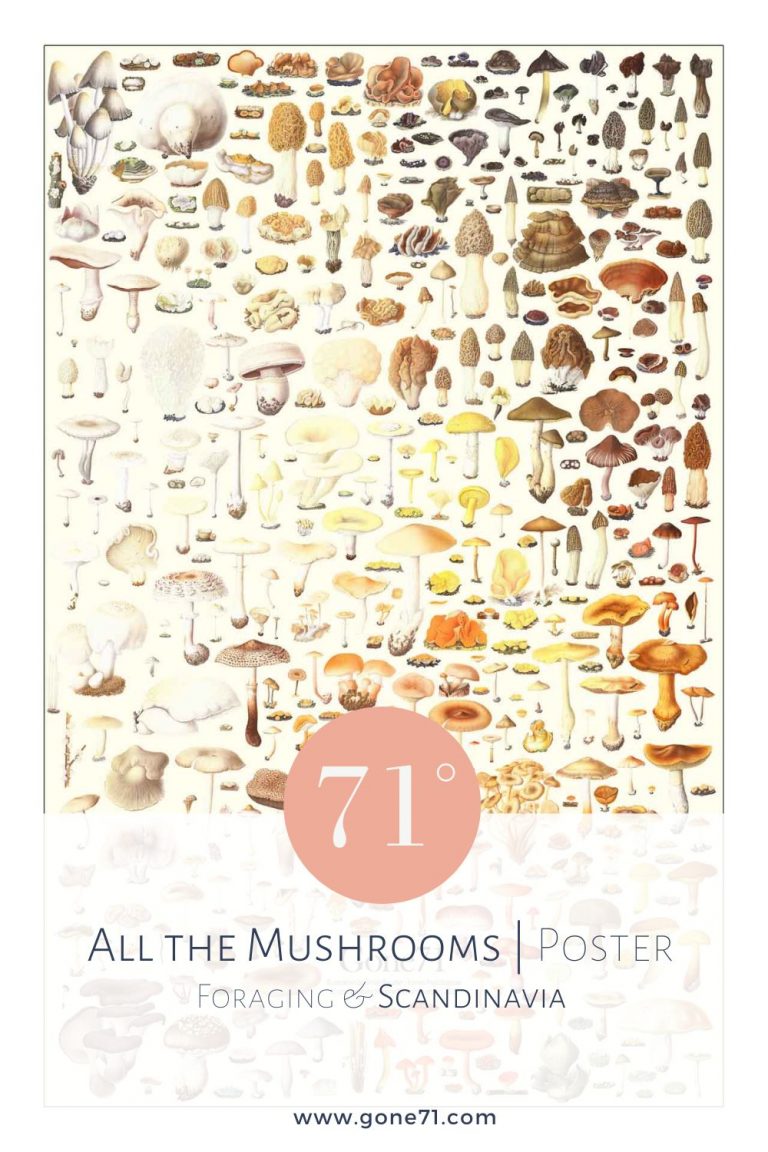swe.: Boksopp | dt.: Bereifter Rotfußröhrling, Herbstrotfuß | sci. syn.: Boletus pruinatus, Xerocomus pruinatus
We have already written extensively about the red-cracking bolete in the corresponding article. A separate species that is often confused with the common red-cracking bolete is the matte bolete (X. pruinatus). Of all the Xerocomellus species known to us (there are said to be 23!), the Matte bolete is our favourite.
In most cases, this mushroom is collected as a red-cracking bolete by almost all mushroom pickers. Even we were not aware until recently that this species differs (significantly) from its close relatives.
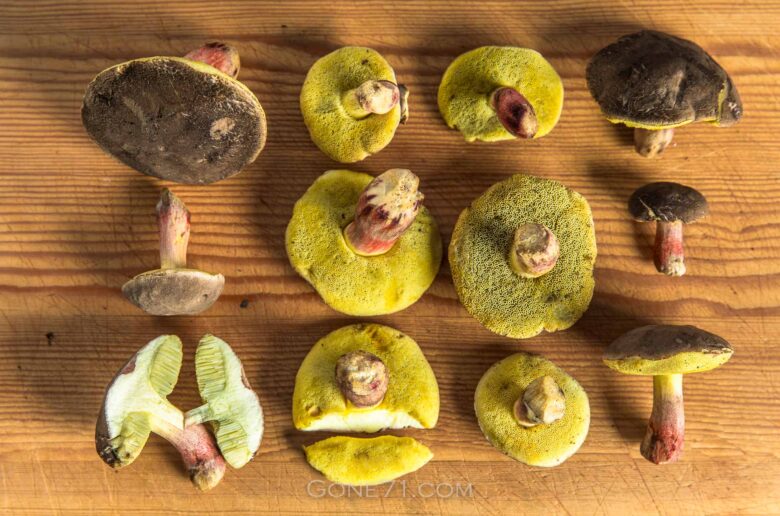
The (culinary) advantages of the matte bolete over related species
Its flesh is much firmer and is much more suitable for independent dishes than, for example, that of the common red-cracking bolete or X. cisalpinus. In addition to its consistency, it also has another great advantage, it is usually much less infested by insects than is the case with other species. The catch is, unfortunately, it mainly grows in the fall and is therefore far less available.
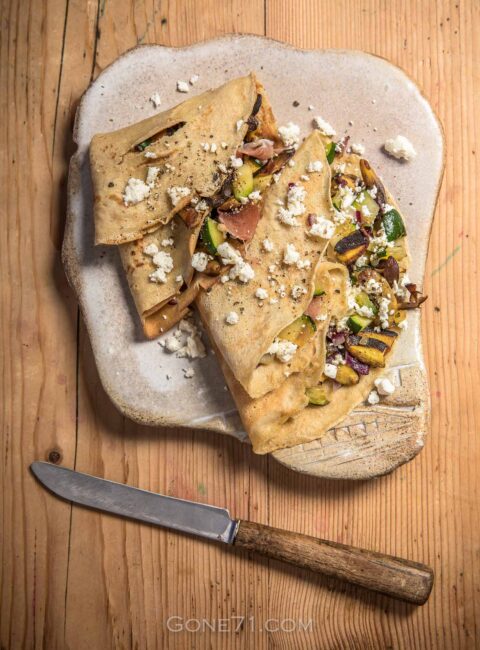
Habitat & Appearance of the matte bolete
height: 4-11 cm
cap diameter: 3-8cm
months: September, October
colours: chestnut brown cap, yellow pores, yellow meat, flesh only slightly blueing if at all
habitat: spruce, beech, oak
smell: slightly sour
consumption: cooked
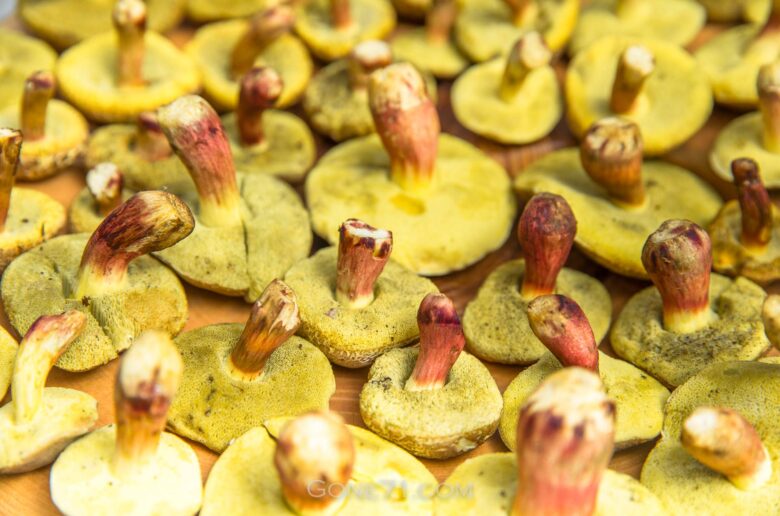
This species is widespread in Europe. It prefers acidic soils and is often found accompanied by spruces. But they can also be found in red beeches and oaks.
The cap can appear almost black when young, but later usually turns chestnut brown. Like all mushrooms of the Xerocomellus genus, it has the typical red color layer between the cap skin and the flesh. Unlike the red-cracking bolete, the matt bolete rarely cracks the cap skin.
The pores are usually a strong lemon-yellow color, turning greenish-yellow with age. The pores do not usually blue with pressure or injury.
In contrast to other species, the stem is very strong. It can be bright yellow, especially when young, and later develops red flakes, which can eventually give the stem a full red appearance.
The meat usually has a very intense yellow color and no red tones in the stem. When exposed to air, the flesh will only blue very slightly or not at all.
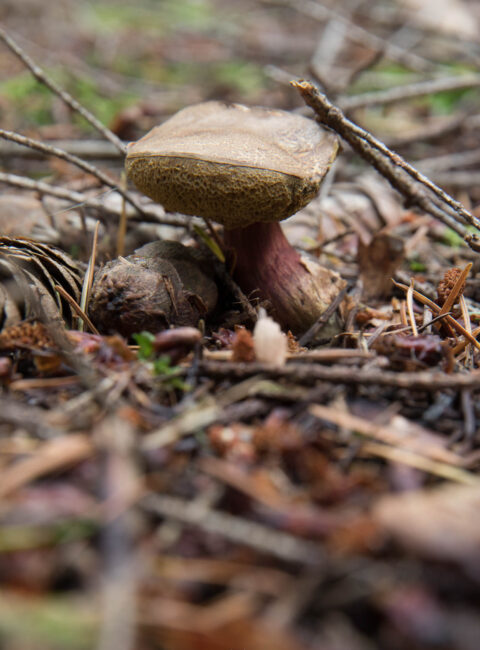
Lookalikes of the matte bolete
Many will (erroneously) group different types of mushrooms under the complex “red-cracking bolete”. The matte bolete is one of them. Here is an overview of different species of Xerocomellus.
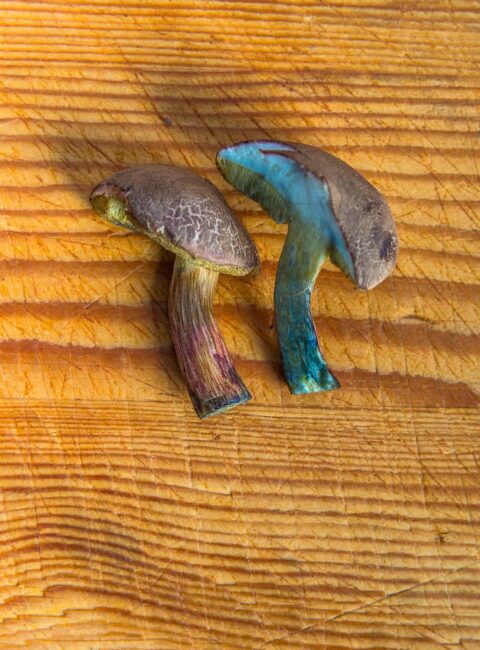
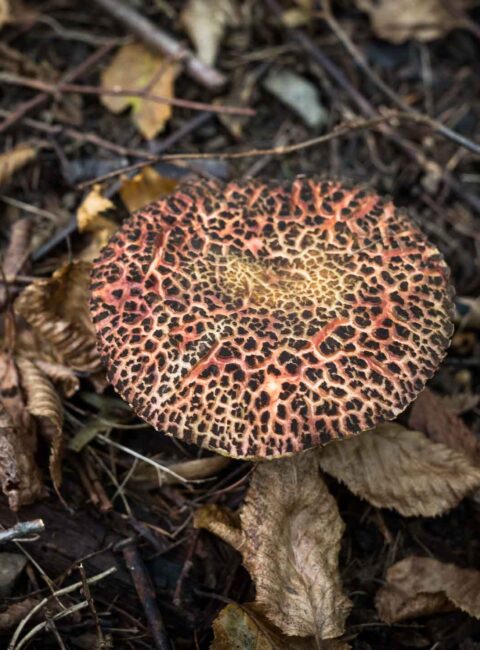
Different species of Xerocomellus (in Europe) often used interchangeably for red-cracking bolete
- Xerocomellus porosporus (Sepia bolte; dt.: Falscher Rotfußröhrling)
–> grey-yellow stem, only a few spots/colored reddish, mostly even total absence of red coloring on the stem, blackish to the base, stem turns blackish upon injury - Xerocomellus cisalpinus (dt.: Starkblauender Rotfußröhrling) –> When cut or injured, the flesh turns strongly blue
- Xerocomellus pruinatus (Matte bolete; dt.: Herbstrotfußröhrling)
–> thick stem, bright yellow flesh, flesh turns only slightly blue if at all - Xerocomellus chrysenteron (Red-cracking bolete, dt.: Gemeiner Rotfußröhrling)
–> stem is reddish dotted, flaky – without net drawing! strong cracking cap - Xerocomellus marekii (dt.: Rotfleischiger Rotfußröhrling)
–> Reddish dots at the base, flaky (without net). Flesh is reddish, can be mixed with slight blue colouring
Boring brown bolete aka brown and yellow bolete (Xerocomus subtomentosus)
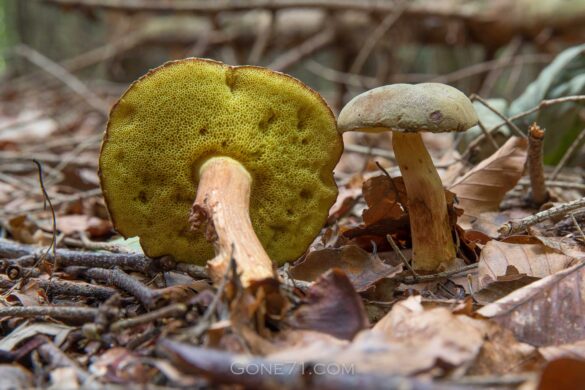
Bitter beech bolete (Caloboletus calopus)
The bitter beech bolete is another bluing and slightly poisonous mushroom that has been known to be confused with species of Xerocomellus. Despite its very attractive appearance, consumption can lead to longer-lasting gastrointestinal disorders.
The light brown-capped mushroom has intense yellow pores that turn blue when pressure is applied. The yellow stalk has a strong color gradient into red towards the base of the stem. The flesh is yellow and stains also blue when bruised or cut.
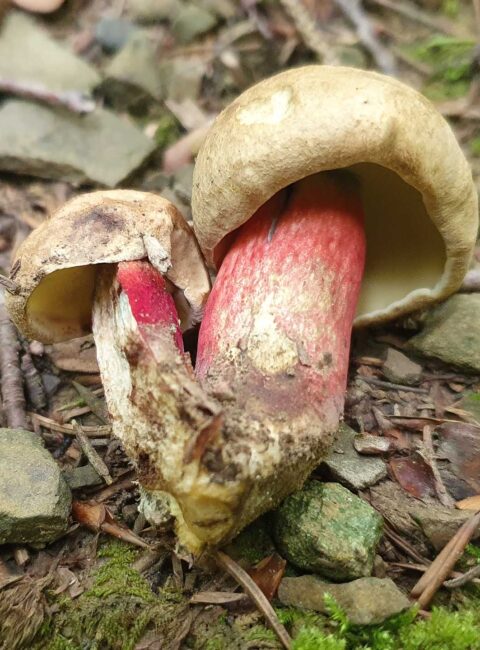
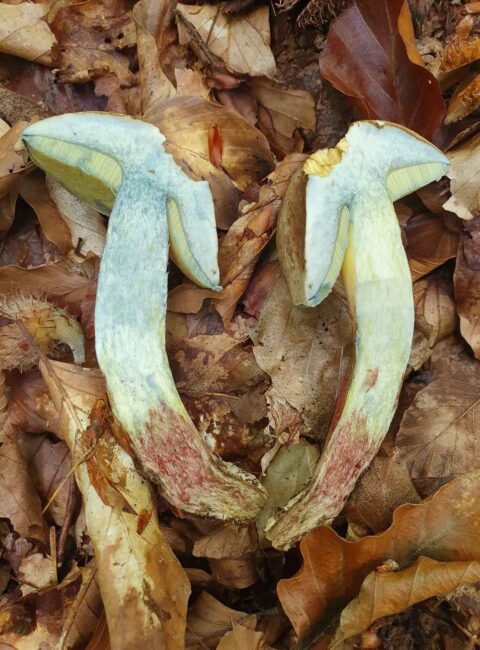
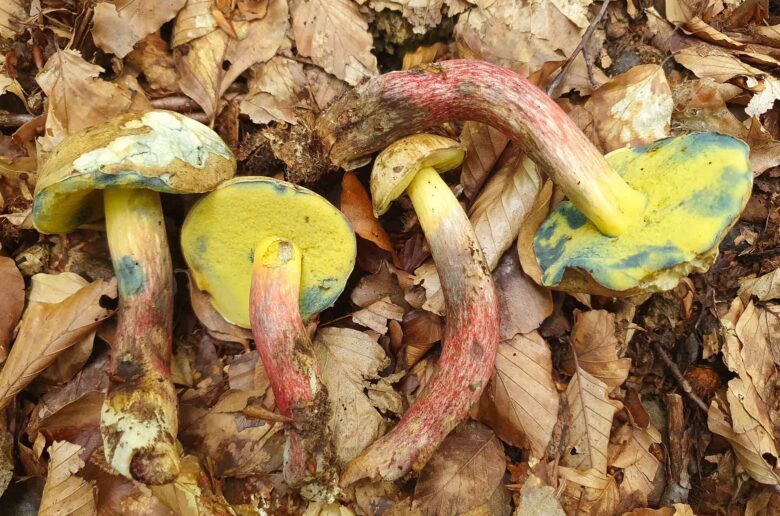
These are just a few of the potential sources of confusion and the list goes on.
Matte boletes in the kitchen
In kitchen use, this mushroom is much better suited than the red-cracking bolete (X. chrysenteron).
Above all, we find the texture much more exciting and its thick meaty, crunchy stems can be better processed both in mixed dishes and as a single mushroom. The matte bolete also has significantly more meat in the cap and in our experience the pore layer can be integrated into the food for longer.
With older specimens, the pore layer can simply be separated before processing.
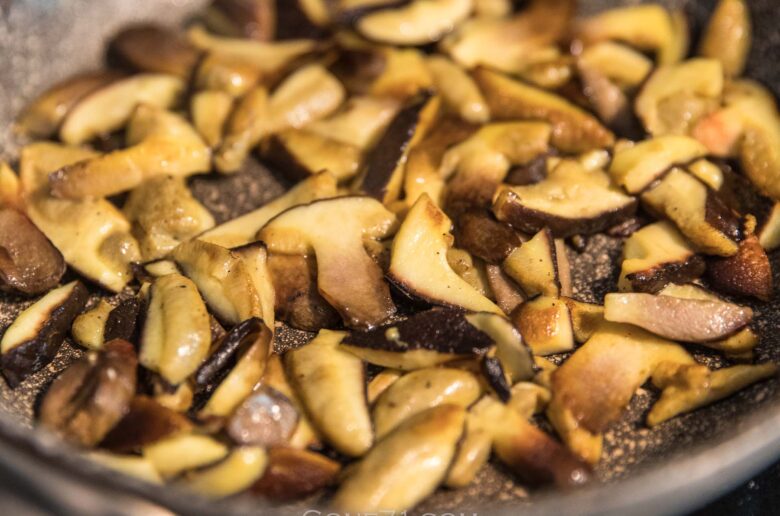
Matte bolete recipe
We prepared a crepe filling with the matte bolete and were thrilled with the result. Our verdict – it definitely doesn’t have to be a mixed mushroom!
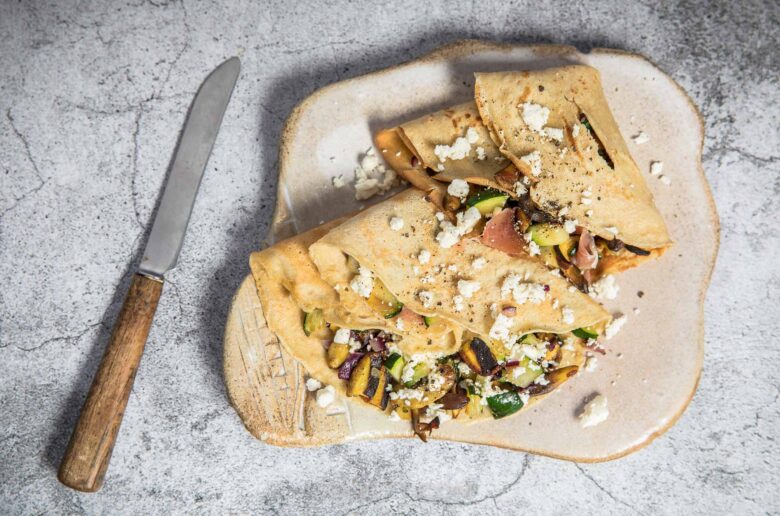
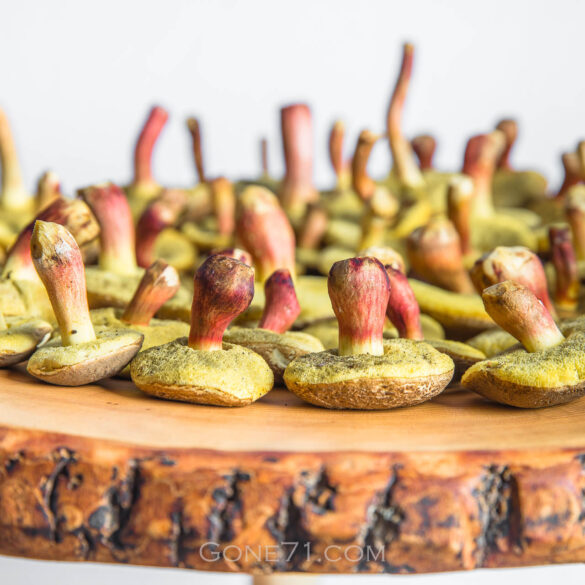
Ingredients
ingredients filling
- 400g matte boletes (Xerocomellus pruinatus)
- 1 red onion
- 1 medium zucchini
- 100g feta cheese
- 50g prosciutto
- olive oil or butter
- salt, pepper
ingredients crepes
- 2 eggs
- 160g wheat flour
- 250 ml milk
- pinch of salt
- neutral vegetable oil
Instructions
Instructions filling
- Clean the ready-to-cook mushrooms well and cut into thin pieces
- Fry in a pan with butter or oil for about 15 to 20 minutes.
- Finely chop the onion and sauté in a little butter or oil.
- Add the chopped zucchini and sauté briefly.
- Stir in the cooked mushrooms and season with salt and pepper
- As a final step, fold in half of the feta cheese and roughly chopped prosciutto
Instructions crepes
- Mix the eggs, flour, milk and salt and let the liquid dough rest for 30 minutes.
- Bake the crepes in a pan as thin as possible on both sides. This works best in a special crepe pan.
- Finally, fold in half of the feta cheese.
- It is best to put the filling in the freshly prepared crepes.
- Garnish with feta cheese and serve.
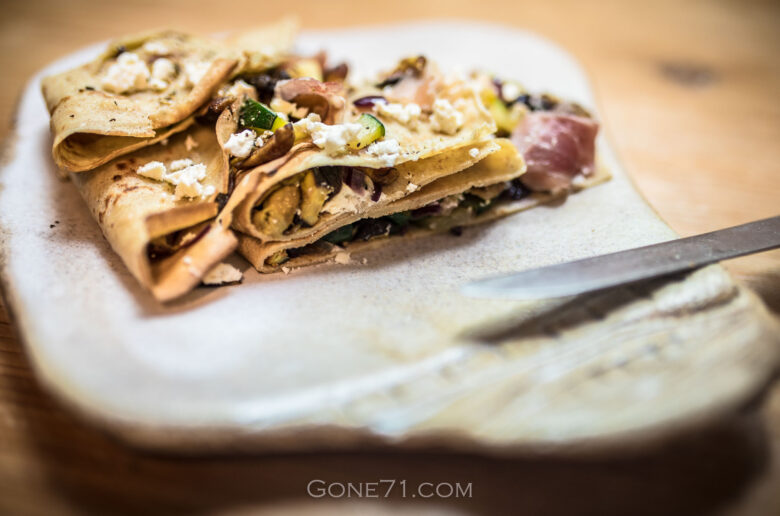
We have compiled this overview with the best of knowledge and belief, but do not claim to be complete and reserve the right to make errors.
Learn more about poisonous mushrooms and mushroom poisons here
↓↓↓
Find some inspiration in other mushroom recipes
↓↓↓
